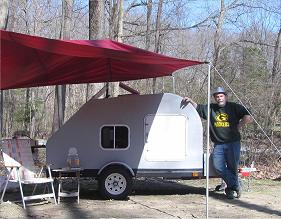As you may or may not know (and most likely don't care), I'm not entirely convinced that mankind's CO2 emissions are entirely responsible for "climate change". Granted we ought to address CO2 emissions but I kinda think there is more going on than scientists understand.
A friend sent me this article: http://www.oism.org/pproject/s33p36.htm It makes some very interesting points.
I wondered about the veracity of the Oregon Institute of Science and Medicine so I visited their web site: http://oism.org/
They have one of these:
A Bruker Ion Cyclotron Resonance Fourier Transfrom Mass Spectrometer for Work On Protien Deamidation
No, I am not BS'ing you!!!!!!!!!!!
Anyone who has a Bruker Ion Cyclotron Resonance Fourier Transfrom Mass Spectrometer for Work On Protien Deamidation has to be legit. It's a rule.
Rumor has it that they're working to find and purchase a Turbo Entabulator: http://www.bing.com/videos/search?q=tur ... FORM=VIRE1
Cheers,
Gus
Climate Change
60 posts
• Page 1 of 4 • 1, 2, 3, 4
Climate Change
The opinions in this post are my own. My comments are directed to those that might like an alternative approach to those already espoused.There is the right way,the wrong way,the USMC way, your way, my way, and the highway.
"I'm impatient with stupidity. My people have learned to live without it." Klaatu-"The Day the Earth Stood Still"
"You can't handle the truth!"-Jack Nicholson "A Few Good Men"
"Some people spend an entire lifetime wondering if they made a difference in the world. The Marines don't have that problem"-Ronald Reagan
"I'm impatient with stupidity. My people have learned to live without it." Klaatu-"The Day the Earth Stood Still"
"You can't handle the truth!"-Jack Nicholson "A Few Good Men"
"Some people spend an entire lifetime wondering if they made a difference in the world. The Marines don't have that problem"-Ronald Reagan
-

eamarquardt - Silver Donating Member
- Posts: 3179
- Images: 150
- Joined: Sat Nov 11, 2006 11:00 pm
- Location: Simi Valley, State of Euphoria (Ca)
Re: Climate Change
Good link Gus!
-- Paul --
Build Thread
http://www.tnttt.com/viewtopic.php?t=35787
2nd Build Thread
http://www.tnttt.com/viewtopic.php?f=50&t=47901


 http://www.teartime.com
http://www.teartime.com
Build Thread
http://www.tnttt.com/viewtopic.php?t=35787
2nd Build Thread
http://www.tnttt.com/viewtopic.php?f=50&t=47901
-

parnold - Donating Member
- Posts: 2344
- Images: 302
- Joined: Mon Feb 08, 2010 4:49 pm
- Location: Northwest New Jersey


 It makes as much sense as most of the stuff ever heard about Gore's far-fetched theory. Bah hum-bug.
It makes as much sense as most of the stuff ever heard about Gore's far-fetched theory. Bah hum-bug.

 Reagan cut funding for fusion research drastically. We'd be 20 years closer now if that hadn't happened.
Reagan cut funding for fusion research drastically. We'd be 20 years closer now if that hadn't happened.  Reagan also cut lots of other research on alternative energy solutions.
Reagan also cut lots of other research on alternative energy solutions.